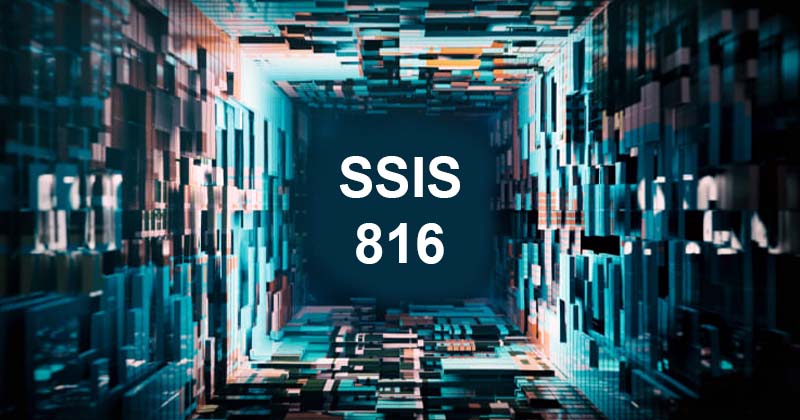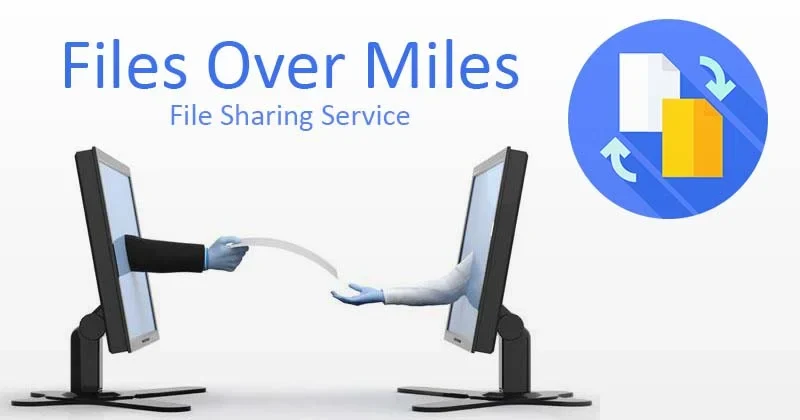Staying on top of the latest tech is crucial for data specialists. One tool they often use is SQL Server Integration Services (SSIS), made by Microsoft. The newest version, SSIS 2019, has cool updates making it better for data tasks. Let’s talk about some big changes that can help you out, no matter if you’re just starting or already a pro with SSIS.
First off, SSIS 2019 improves how you manage packages, making things easier. The toolbox also got bigger, giving you more tools to work with. Workload distribution is smoother now, which is great for performance. Plus, there are upgrades for processing Hadoop data, making it more efficient.
Understanding these updates helps you get the most out of SSIS 2019. It’s a handy tool for data integration and these new features make it even better.
What is SSIS 816?
SSIS 816 or SQL Server Integration Services 2016, is Microsoft’s latest data integration platform. It came out in 2016 and is an upgrade that makes things faster, bigger, and easier to use.
Here are some cool things about SSIS 816:
- Project Implementation on Azure: Now, you can use SSIS with Azure, Microsoft’s cloud service. This means you can move your SSIS projects from your computer to the cloud, making things more flexible.
- Incremental Package Deployment: This makes it quicker to update your projects. You only need to update the parts that changed, not everything.
- Data Tap: This is a new tool that makes it easy to get data from lots of different places, like social media or other tools you use. There are over 70 connectors to help you with this.
- Transformation through Row Sampling: You can now easily pick out random pieces of data while you’re working with it. This is helpful when you’re testing or checking things.
- Azure Feature Pack: This gives you more tools to work with Azure services like Data Lake Store, Blob Storage and HDInsight.
In simple terms, SSIS 816 gives you more options for putting data together, works well with the cloud, makes it faster for developers to do their job, and makes things run better overall. If your organization wants good solutions for data integration, SSIS 816 is a smart choice to think about.
SSIS 816 Features
SSIS 816 has some really cool features that make it work better and faster. SQL Server Monitoring becomes imperative for maintaining optimal database performance, and SSIS 816 offers advanced tools to track and analyze the intricacies of data flow, ensuring efficient operations.
Scalability and Performance
- SSIS 2016 is better at handling a lot of data and doing things faster. It can use up to 64 cores for one task, making data integration much quicker.
- You can choose to run tasks in your computer’s memory without saving extra information, which helps speed things up.
- The Scale Out feature lets you spread the work across multiple computers, making it even faster.
Enhanced Data Flow Features
- SSIS 816 has new tools for moving data around, like OData Source and Destination and ODBC Flow Destination.
- It works better with different types of data and has improved performance for tasks like lookups, aggregations and pivots.
- Handling errors is easier and it supports new kinds of data like DATE, TIME, DATETIME2 and DATETIMEOFFSET.
Enhancements in Deployment and Management
- Now, you can deploy whole projects instead of just parts of them. This makes it easier to organize and manage your work.
- Using parameters helps you change settings while things are running, making it more flexible.
- The catalog, where you keep your projects, has new views to help you see what’s happening, and there are new tools to manage it better.
The SSIS 816 is like a supercharged tool for moving and managing data. It’s faster, handles more types of data and is easier to control. Using these features can help you build strong and efficient data systems.
Why Upgrade to SSIS 816?
Upgrading to SSIS 816 comes with a bunch of cool benefits that make your data work better.
Improved Security
- SSIS 816 keeps your data safe with features like Always Encrypted. It makes sure that sensitive info stays private when it’s moving around or stored by encrypting it. Only the right programs can unscramble the data.
- You can also control who gets access to your work by setting up different levels of permission for different people.
SSIS Modern Development Experience
SSIS 816 makes things easier for developers. Now, you can work with it using Visual Studio Code, which is a popular tool for coders. This means you get smart suggestions, debugging help and an easy way to put your work into action without needing another tool.
New Connectors for More Options
The SSIS 816 lets you connect to more things. You can move data between SSIS and platforms like SAP BW, Hadoop and Spark. There are also connectors for OData and the web, making it easier to get data from different places.
Boosted Productivity
You can speed up your work by using multiple computers at the same time (scale-out). It also lets you keep things in your computer’s memory, so you don’t have to wait for them to load each time.
816 Long-Term Support
SSIS 2016 promises to stick around and help you out for a long time, at least ten years. You’ll get updates and fixes to keep everything running smoothly.
In simple words, moving to SSIS 816 means your data is safer, your work is easier, you can connect to more things, it’s faster and you’ll get help for a long time. For any business that relies on putting data together, these advantages make switching to SSIS 2016 a smart move.
Latest Version of SSIS 816
In the latest version of SQL Server Integration Services, called SSIS 816, there are some changes and improvements that make it work better.
Performance and Scalability
SSIS 816 has a new feature called scale-out. This means you can spread your work across different servers, making it go faster. It also has better ways to handle data flow, keeping records and managing tasks.
Advanced Analytics and R Integration
There are new tools in SSIS 816 that let you use fancy data analysis techniques and integrate R scripts. This means you can do more advanced analytics and predictions while moving your data around. You can now run R scripts right inside SSIS, sending your data to R for analysis.
Upgrades in Deployment
Deploying your projects is easier now. SSIS 816 has added features like incremental package deployment, environment duplication and project versioning. This makes it simpler to update your projects. You can now deploy only the parts that changed, copy environments and even go back to older versions if needed.
By simplifying, SSIS 816 is better at handling big tasks, does more advanced data analysis and makes it easier to update your projects. These changes help you get more done and make your data work more efficiently.
Additional Features of SSIS
In SSIS 816, there are more cool improvements that make your data work even better:
Access to More Data Sources
You can now connect to more places for your data, like SAP HANA, Hadoop, Azure SQL Data Warehouse, and OData. This means you have more options for where your data comes from.
Compatibility Boost
SSIS 816 works well with the latest versions of existing data sources, like Oracle 12c. It keeps up with the updates, making sure everything runs smoothly.
Better Connections with SQL Server
The connection to SQL Server is upgraded with a better provider, called OLE DB. This makes things smoother when working with SQL Server databases.
Improved Logging with SSIS 816
Keeping track of what’s happening gets an upgrade with custom log providers. This means you can set up logs that fit your needs, making it easier to understand what’s going on.
Stronger Link with Power BI
SSIS 816 works even better with Power BI, a tool for analyzing and visualizing data. You can now start a Power BI report right from an SSIS package, making it seamless to work with both.
As simplified, SSIS 816 gives you more ways to get data, better connections with different systems, smoother logging and a stronger link with Power BI. These upgrades make your data systems more flexible and powerful. It’s like giving your data work a boost, making it more efficient and robust.
How to Get Started with SSIS 816?
Getting started with SQL Server Integration Services (SSIS) 816 is easy with these simple steps:
Download and Install SSIS
Get SSIS by downloading SQL Server 2016, which includes SSIS. The free SQL Server Developer Edition also has SSIS. During setup, make sure to choose Integration Services as one of the components to install.
Start and Explore SSIS
Once SQL Server 816 is installed, open SSIS from the Microsoft SQL Server program group. The first time you open SSIS, you’ll see the SSIS catalog, a storage space for your SSIS projects. The catalog helps manage your projects, environments, parameters and logs.
Create a New SSIS Project
To make your first SSIS package, right-click on the SSIS catalog, choose “New Folder,” then “Project.” Select “Integration Services Project” and give your project a name. Click “OK” to create it. Your new SSIS project will be visible in the SSIS catalog.
Build an SSIS Package
Go to your new SSIS project to open SQL Server Data Tools (SSDT), the SSIS development platform. To create a new package, right-click on the “Packages” folder and choose “New SSIS Package.” Drag and drop data flow elements like sources, transformations and destinations onto the design canvas to build your ETL data flow.
Set Up and Run the Package
Configure the elements in your SSIS package by defining properties and adding scripts or expressions. To run your package, click “Start Button” or press F5. The package will run, and data will flow through the data flow elements.
Deploy and Schedule the Package
Set up your SSIS project by right-clicking on it in the SSIS catalog and choosing “Deploy Project.” This deploys your project and its packages. You can then schedule the packages to run using SQL Server Agent or another scheduling tool.
Following these steps will help you start building, running and deploying SSIS packages.



